스페인 여행은 평생 잊지 못할 가장 신나는 휴가 중 하나가 될 수 있습니다. 이 나라를 제대로 알고 싶다면 여기 스페인 10일 여행 코스가 있습니다.

스페인은 문화, 역사, 훌륭한 요리, 멋진 풍경이 독특하게 어우러져 유럽에서 가장 다양하고 활기찬 나라 중 하나입니다. 그리고 며칠 바르셀로나에 머물렀다고 해서 스페인을 다 안다고 생각하지 마세요. 스페인의 모든 도시는 고유한 매력을 가지고 있으며, 세비야는 마드리드와 전혀 다르고, 마드리드 또한 마르베야와 다릅니다.
스트레스 없는 스페인 여행을 위한 팁
스페인에 며칠을 머물러야 할까요?
짧은 여행으로는 스페인을 알기에는 시간이 부족하며, 스페인은 제대로 알 가치가 있는 곳이라는 데 이미 동의하셨을 겁니다. 전국을 여행하며 각 도시에 충분한 시간을 할애하고 싶다면, 10일 여행 코스를 선택하는 것이 좋습니다. 이는 일상 일정을 완전히 방해하지 않으면서도 숨 가쁘게 이동하지 않고 여유를 가질 수 있는 완벽한 시간입니다.
스페인을 방문하기 가장 좋은 시기는 언제인가요?
어떤 여행과 마찬가지로 계절을 선택할 때 고려해야 할 여러 개인적인 선호도가 있습니다. 먼저 날씨가 더 온화하고 인파가 더 적을 때 여행하는 것을 선호하시나요? 그렇다면 봄이나 가을에 가세요. 인파는 상관없지만 문화 활동과 축제를 선호한다면 여름이 좋고, 돈을 절약하고 도시 전체를 혼자 만끽하고 싶다면 겨울에 가세요.
다음 글도 좋아하실 거예요: 일 년 내내 스페인 여행 짐 싸기
스페인에서 연결 상태를 유지하는 방법?
스페인에서의 10일 여행 중 안정적이고 신뢰할 수 있는 인터넷 연결은 판도를 바꿀 수 있습니다! 지도, 교통 일정, 번역 앱을 확인하는 데 필요할 테니까요. 여행 중에도 연결 상태를 유지하세요. Yoho Mobile의 무료 eSIM 체험을 이용해 보세요. 대부분의 국가에서 즉시 모바일 데이터에 접속할 수 있습니다. SIM 카드도 계약도 필요 없이 빠른 설정으로 몇 분 안에 온라인 상태가 됩니다.
나중에 eSIM 플랜을 구매하고 싶다면 결제 시 코드 YOHO12를 사용하여 12% 할인을 받으세요!
스페인 10일 여행 코스
1-2일차: 바르셀로나
스페인에서 가장 아름다운 도시 중 하나이자 가장 유명한 도시인 바르셀로나에서 10일 여행을 시작해 봅시다. 바르셀로나는 건축적 경이로움, 활기찬 동네, 긴 비행 후 휴식을 취할 수 있는 아름다운 해변으로 가득합니다. 스페인을 많이 여행한다면 이틀이 길게 느껴질 수도 있지만, 여행의 나머지 부분을 즐기려면 휴식도 필요합니다.
이틀간 바르셀로나에서 할 것들:
- 사그라다 파밀리아 방문: 바르셀로나 건축에 대해 읽어본 적이 있다면 안토니오 가우디의 작품을 알 것입니다. 이 성당은 그의 걸작입니다. 단순히 놀랍고, 독특하며 시각적이며, 여행에서 본 다른 어떤 성당과도 다르고, 규모도 거대합니다! 내부가 외부보다 훨씬 더 매혹적이므로 최소 몇 시간 동안 방문할 계획을 세우는 것이 좋습니다.

-
파세이그 데 그라시아 산책: 쇼핑하기에는 조금 이른 시간일 수도 있지만, 고급 상점과 아름다운 건물로 가득한 이 사랑스러운 대로를 누가 거부할 수 있겠어요? 잠시 동안 윈도우 쇼핑만 하더라도 긴 비행 후 다리를 풀기에 완벽한 활동입니다.
-
구엘 공원 방문: 가우디의 또 다른 작품이며, 바르셀로나에서의 둘째 날을 시작하는 훌륭한 방법입니다. 도시 전체와 아침 햇살에 빛나는 활기찬 모자이크를 보려면 최대한 일찍 가세요. 기념 구역과 같은 일부 구역은 입장권이 필요하다는 것을 잊지 마세요. 미리 구매하세요.
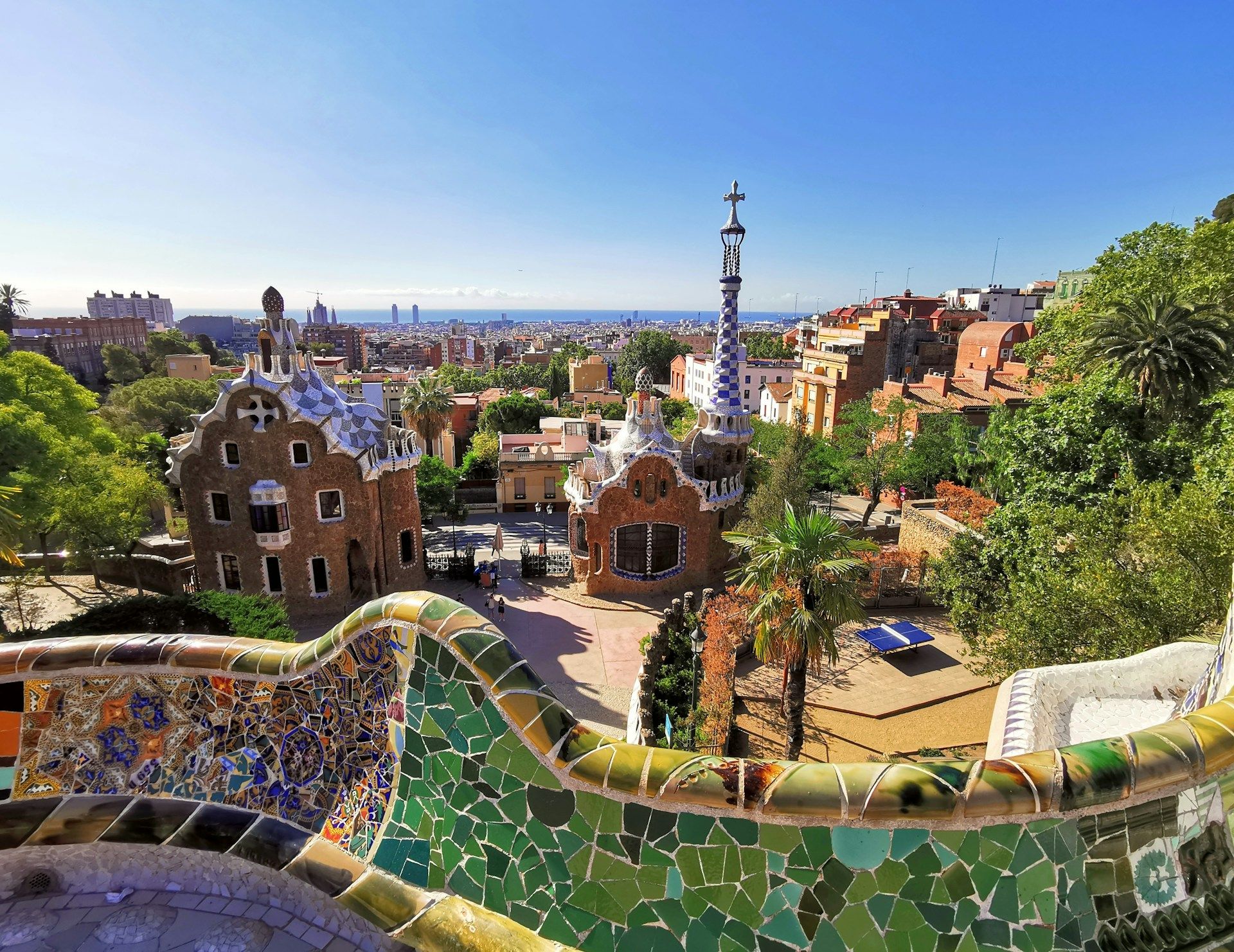
Photo by Dorian D1 on Unsplash
- 바르셀로네타 해변에서 수영: 바르셀로나를 방문하고 상징적인 해변 중 하나를 즐기지 않을 수 없습니다. 도심과 가까워서 긴 여행이 되지 않으며, 지중해 햇살 아래 누워 휴식을 취하고 근처 식당에서 칵테일과 해산물을 맛볼 수 있습니다.
3일차: 마드리드
이제 수도이자 스페인 문화의 심장부인 마드리드로 향해 봅시다. 여행 코스에서 놓칠 수 없는 곳입니다. 바르셀로나에서 분명 느꼈을 지중해의 여유와는 달리, 마드리드는 북적이는 도시입니다. 사람들은 온갖 이유로 이곳을 여행하며, 즐거운 도시인 동시에 빠르게 돌아가는 도시입니다.
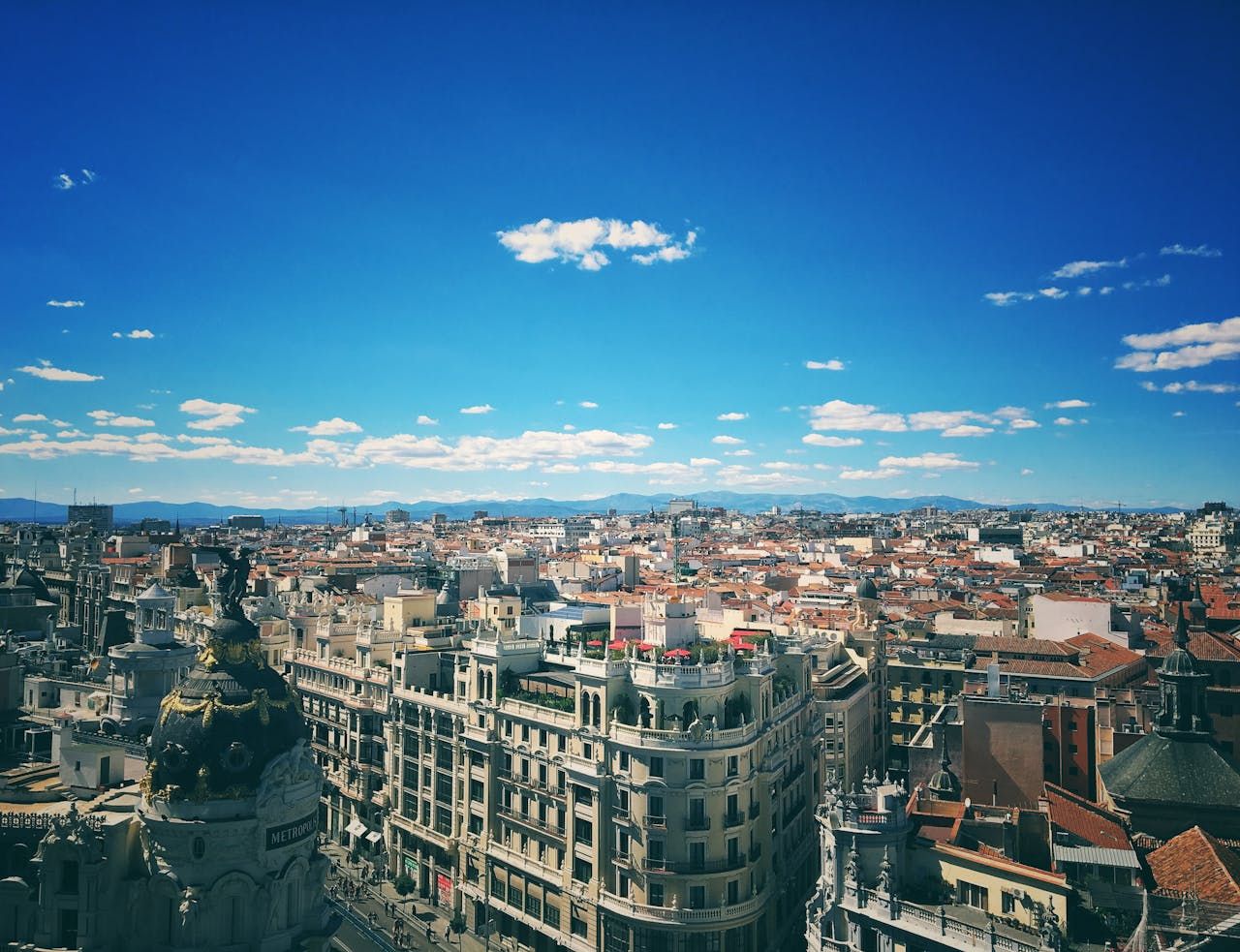
마드리드에서 시간을 낭비할 틈이 없습니다
-
프라도 미술관 방문: 모든 사람, 특히 예술 애호가에게 필수적인 방문 코스입니다. 전 세계에서 가장 중요한 박물관 중 하나이며, 내부에는 벨라스케스, 고야, 엘 그레코와 같은 거장들의 작품이 있습니다. 이미 사진으로 작품을 본 적이 있더라도 '라스 메니나스’와 같은 걸작을 실제로 보고 벨라스케스 붓터치 하나하나를 감상할 수 있는 것은 특별한 기회입니다.
-
레티로 공원 산책: 오래된 그림과 조각은 매우 아름답지만, 이런 휴가일에 실내에만 있기에는 아마 피곤할 것입니다. 그러니 마드리드 심장부에 있는 넓고 사랑스러운 녹지 공간인 레티로 공원으로 향합시다. 그저 걷고, 깨끗한 공기와 녹지에 몸을 맡기기에 이상적인 곳입니다.
-
왕궁 방문: 스페인 왕실 역사에 관심이 있다면 스페인 왕실의 거주지를 방문할 수 있습니다. 오늘날 그곳에 살지는 않지만 수세기 동안 그렇게 했으며, 연결점 없이도 궁전은 그저 방문할 가치가 있는 아름답고 화려한 건물입니다.
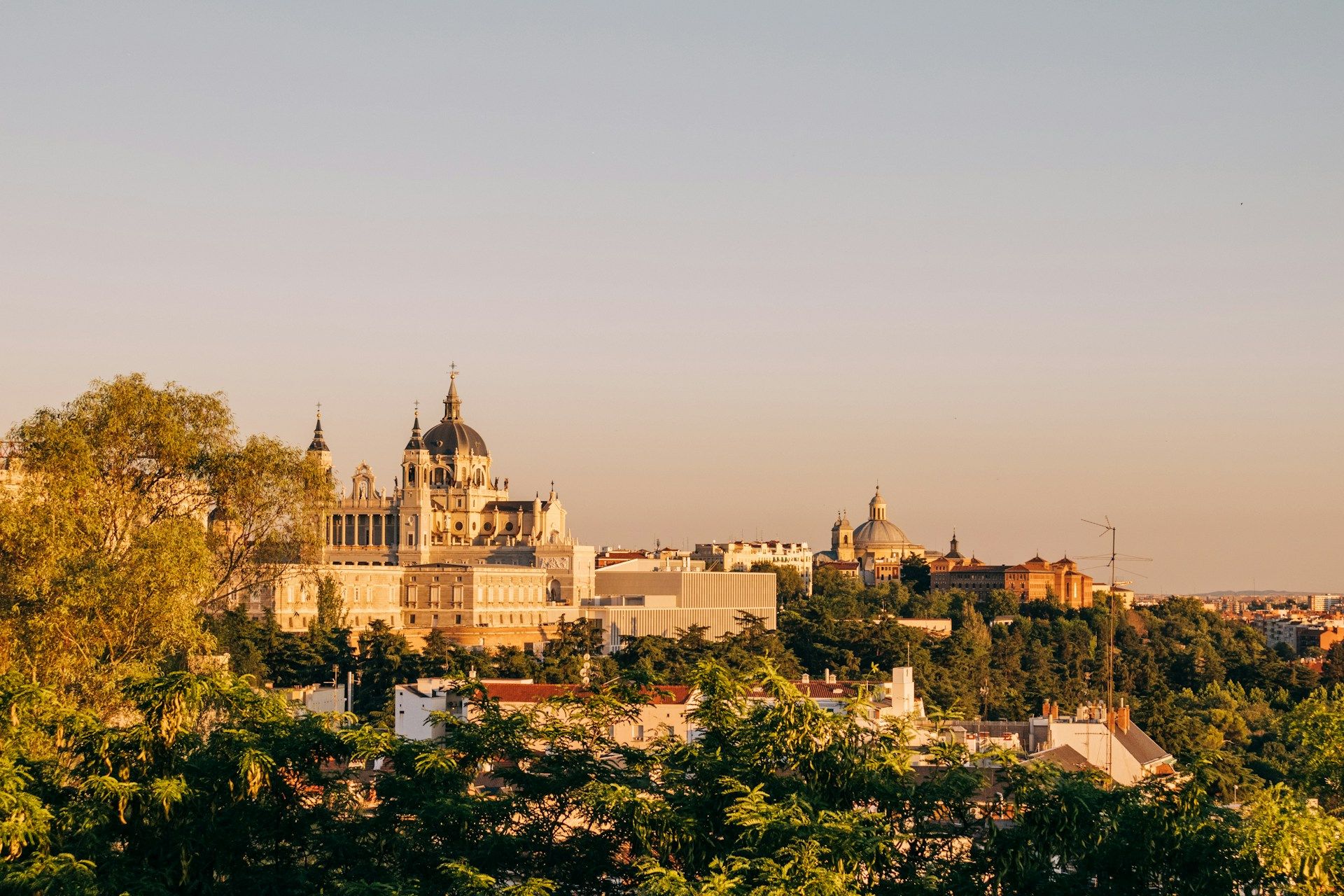
Photo by Eduardo Rodriguez on Unsplash
4일차: 그라나다
스페인 역사에 대해 조금 더 알아봅시다. 스페인 반도가 800년 이상 무어인들의 지배를 받았다는 것을 알고 계셨나요? 그라나다와 같은 도시에서 건축물을 보면 더 쉽게 믿을 수 있습니다. 기독교, 이슬람, 유대인 영향이 눈에 띄게 혼합되어 있어 스페인 여행 코스에서 방문하고 탐험하기에 독특하고 흥미로운 곳입니다.
안달루시아의 보석 탐험
-
알람브라 방문: 아마 도시 전체에서 가장 유명한 랜드마크일 겁니다. 이 궁전 단지는 정교한 정원과 복잡한 타일 장식으로 이야기와 전설에 영감을 주었습니다. 서양인의 눈에는 이국적인 곳이었고 여전히 그렇습니다. 그러니 미리 티켓을 구매하세요. 그렇지 않으면 입장할 수 없을 겁니다.
-
알바이신 지구 탐험: 무어 궁전을 방문한 후, 대부분의 사람들이 살았던 무어 지구를 방문하는 것이 적절합니다. 이 지역은 많은 중세 지구와 마찬가지로 좁고 구불구불한 거리의 미로로, 쉽게 길을 잃을 수 있습니다. 미라도르 데 산 니콜라스에 도착하면 시에라 네바다 산맥을 배경으로 한 알람브라를 볼 수 있습니다.
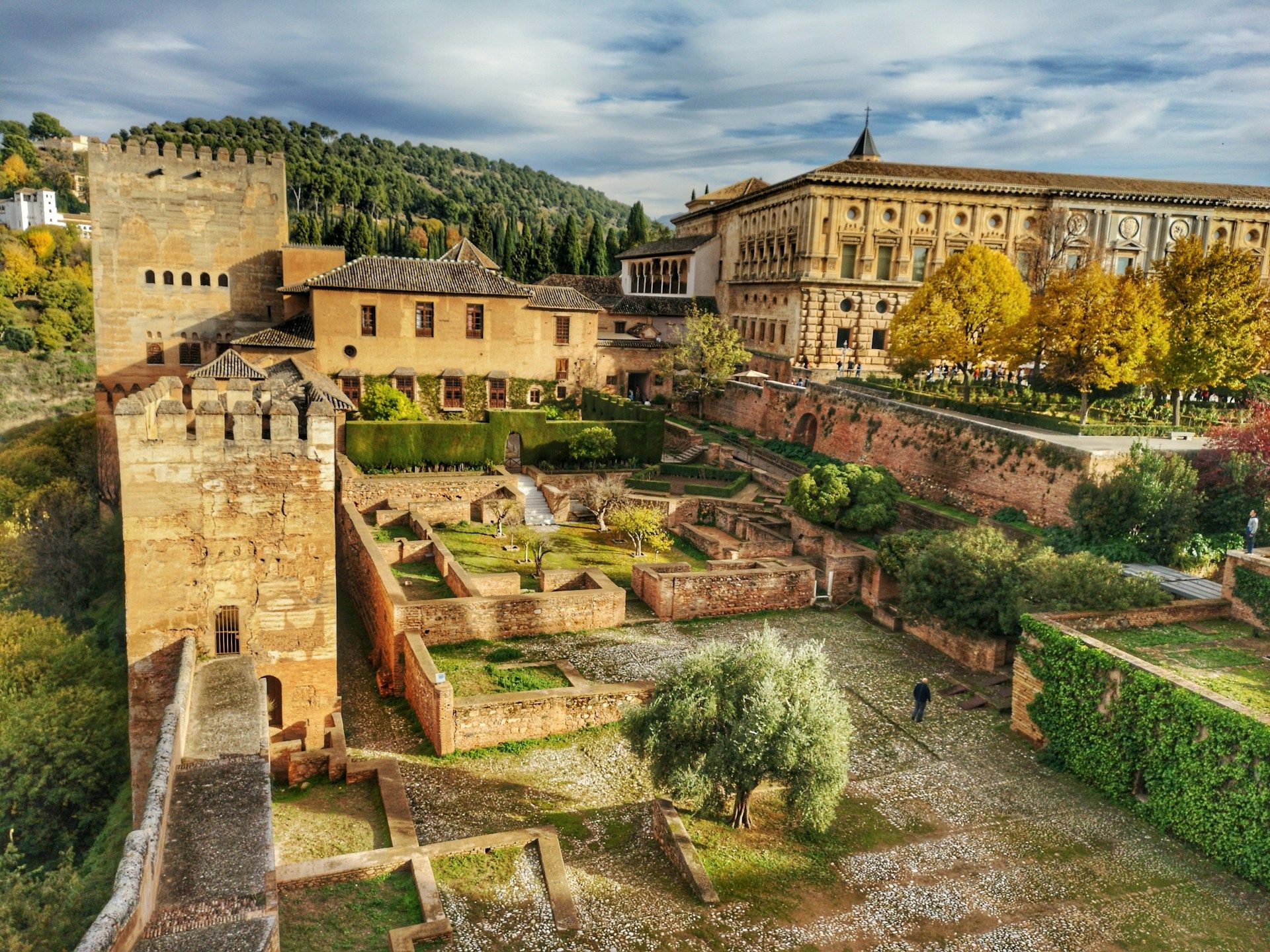
Photo by Marco Montero Pisani on Unsplash
5일차: 코르도바에서의 하루
무어의 영향에서 진정한 무어의 장엄함으로 이동합시다. 코르도바는 또 다른 믿을 수 없을 만큼 유서 깊은 도시이며, 여행 코스에서 놓칠 수 없습니다. 중세 도심은 유네스코 세계 유산으로 지정되어 있으며, 박물관 방문을 즐긴다면 이곳을 좋아할 것입니다.
- 메스키타 방문: 이 아름다운 건물은 역사가들이 팔림세스트(Palimpsest)라고 부르는 것, 즉 변형되었지만 원래 형태가 여전히 보이는 건물의 훌륭한 예입니다. 8세기에 모스크로 건설되었지만, 기독교인들이 스페인의 통제권을 되찾았을 때 성당으로 용도를 변경했습니다. 결과적으로 이슬람과 기독교 건축 양식이 혼합된 독특한 종교적 장소가 탄생했습니다.
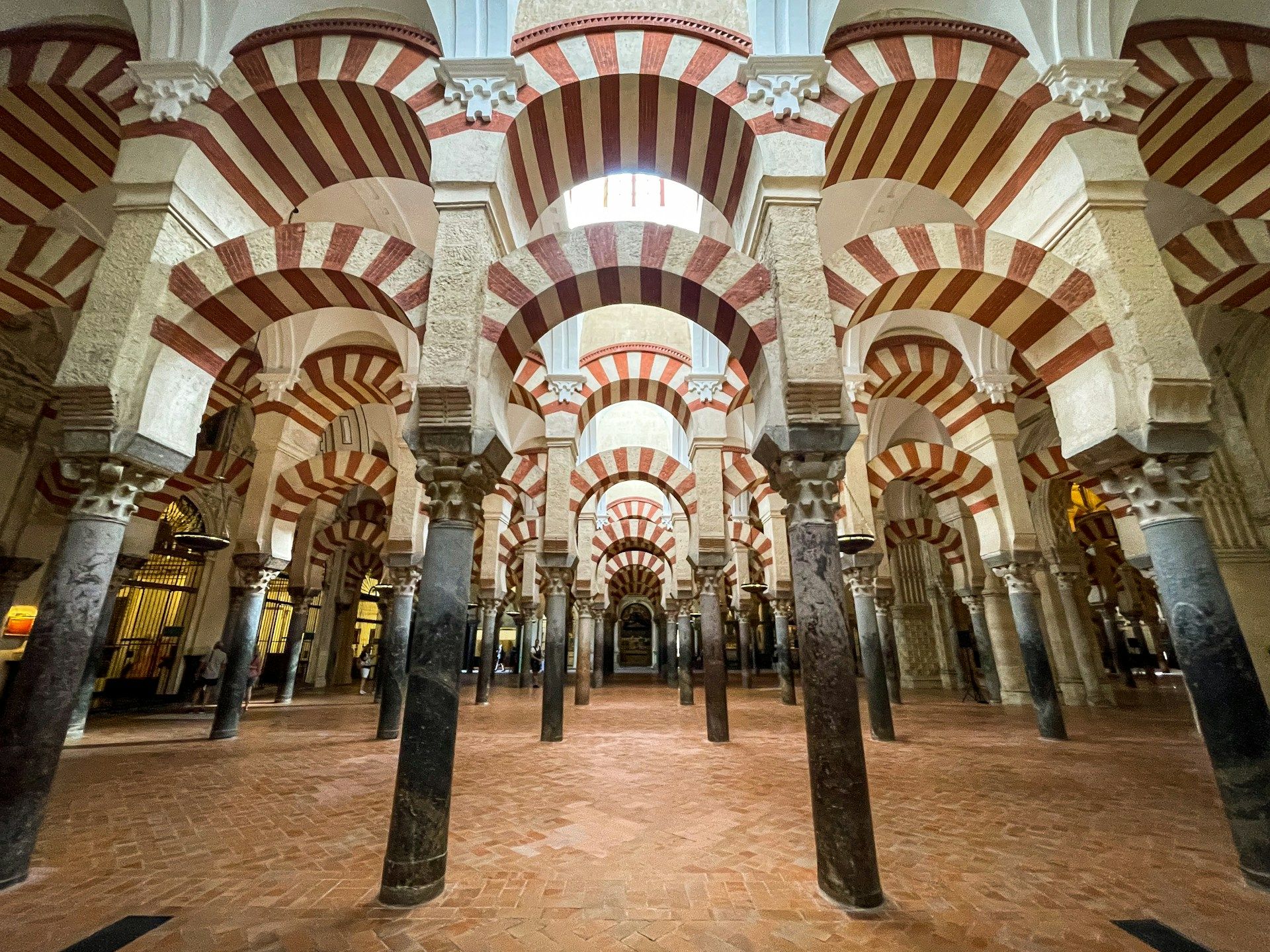
Photo by Alexandra Tran on Unsplash
-
유대인 지구 탐험: 정복 기간 동안 코르도바에 살았던 사람들은 무어인들만이 아니었습니다. 유대인들도 그곳에 살았고, 그들이 살았던 도시의 지역을 여전히 볼 수 있습니다. 그곳에는 스페인에 몇 안 남은 중세 회당 중 하나인 코르도바 회당과 유대인 유산 전용 박물관인 카사 데 세파라드가 있습니다.
-
알카사르 데 로스 레예스 크리스티아노스 방문: 방문한 많은 스페인 도시들처럼 코르도바에도 알카사르가 있습니다. 이곳은 왕과 왕실이 살았던 요새 궁전 단지입니다. 특히 아름다운 정원과 도시 전체의 놀라운 전망으로 유명합니다.
6일차: 세비야에서의 문화적이고 편안한 하루
안달루시아의 심장부이자 스페인에서 가장 활기찬 도시 중 하나인 세비야입니다. 세비야는 아름답고 풍요로우며, 강렬한 플라멩코 문화, 낭만적인 건물, 웅장한 궁전이 있습니다. 음악, 춤, 맛있는 음식이 빠진 스페인 여행 코스는 완성될 수 없으므로 이곳은 스페인 문화를 더 많이 볼 수 있는 완벽한 장소입니다.
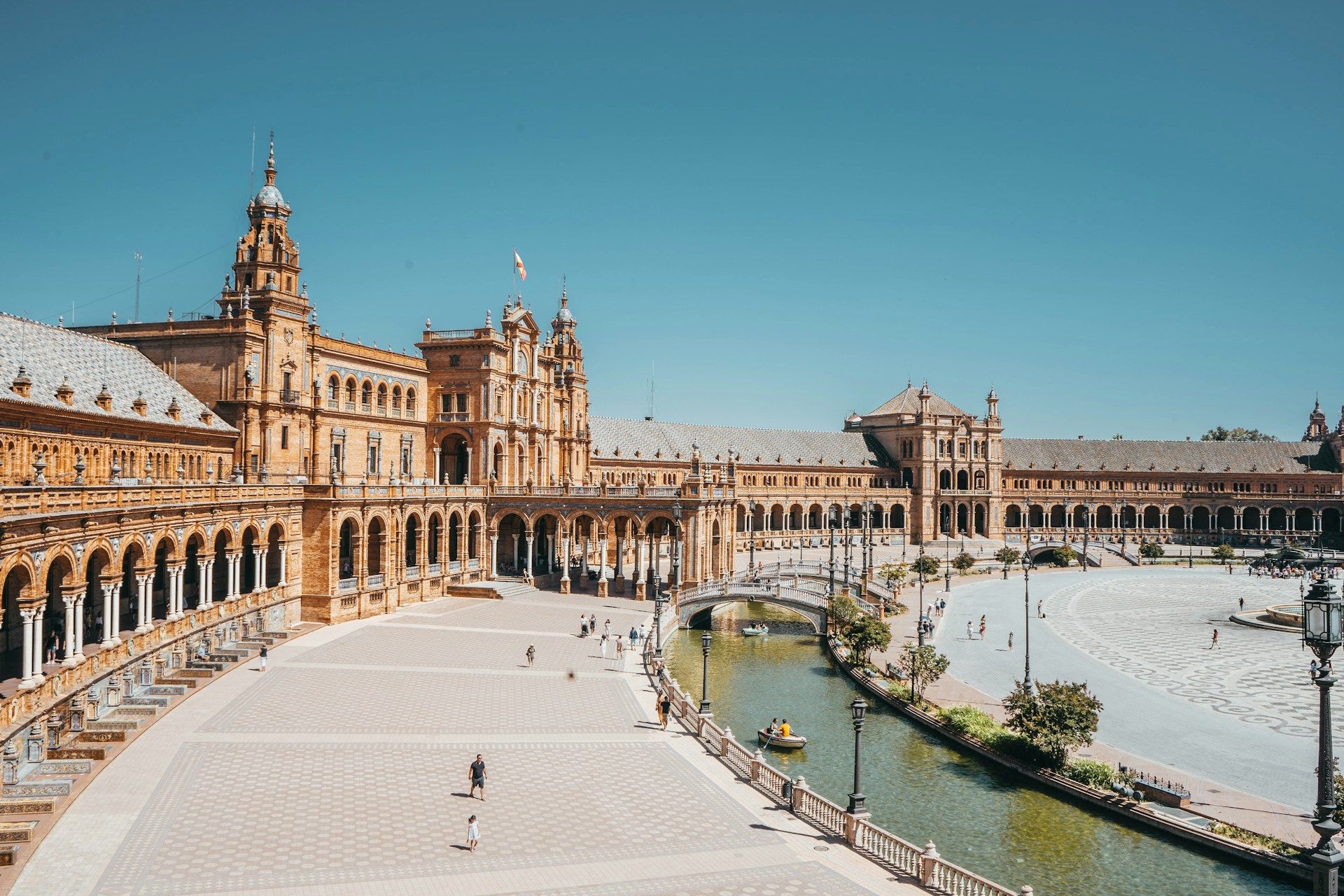
Photo by Joan Oger on Unsplash
- 플라멩코 공연 관람: 어떤 사람들은 이를 세상에서 가장 섹시한 춤이라고 부릅니다. 누가 알겠어요, 당신도 동의할지도 모릅니다. 진실은 타블라오의 댄서들이 박수를 치고 음악에 맞춰 발을 구르는 모습은 직접 볼 가치가 있는 광경이라는 것입니다. 카사 데 라 메모리아 또는 엘 아레날과 같은 장소에서 공연을 관람해 보세요.

- 현지 바에서 타파스 맛보기: 스페인의 어떤 바에서든 타파스를 찾을 수 있지만, 세비야의 타파스만큼은 아닙니다. 이 도시는 다양성과 품질로 유명하며, 좋은 맥주와 함께 맛보면 잠시 긴장을 풀기에 완벽합니다. 결국 지난 6일 동안 전국을 돌아다녔으니까요.
7-8일차: 코스타 델 솔
한 곳에서 다른 곳으로 걷는 데 지쳤을 테니, 몇 시간 이상 진정으로 휴식을 취할 수 있는 곳으로 가 봅시다. 그리고 스페인에서 좋은 날씨를 즐기고 휴식을 취하고 싶다면 코스타 델 솔보다 더 좋은 곳은 없습니다.
말라가는 역사적인 매력과 현대 예술 및 거리 생활이 만나는 도시입니다. 그리고 말라가에서 할 것과 볼 것이 많지만, 지금은 휴식에 더 집중하고 있습니다. 그저 모든 스트레스를 내려놓고, 지중해 생활 방식에 동참하여 휴식과 평화를 즐기세요.
-
피카소 미술관 방문: 예술을 사랑하고 스페인 현대 미술가를 더 보고 싶다면 파블로 피카소보다 더 유명한 인물은 없을 겁니다. 이 미술관에서는 그의 작품의 진화를 직접 볼 수 있는 특별한 기회를 가질 수 있습니다.
-
말라게타 해변에서 휴식: 자, 이제 따뜻한 햇살 아래 편안하게 누워 멋진 바닷바람을 즐겨 봅시다. 말라게타 해변에서는 지중해 생활 방식을 진정으로 만끽하며 오후 내내 하고 싶은 대로 할 수 있습니다. 가지고 다니던 소설을 마저 읽거나, 바다에서 수영하거나, 현지인들과 교류해 보세요.

Photo by Michael Martinelli on Unsplash
마르베야 해변 즐기기
코스타 델 솔을 지나치면서 아름다운 마르베야에서 최소 하루를 보내지 않으면 아쉬울 것입니다. 그래서 여행 코스에 포함해야 합니다. 고급 리조트, 화려한 마리나, 고급 리조트, 그리고 물론 멋진 해변으로 국제적으로 매우 잘 알려져 있습니다.
-
마르베야 구시가지 산책: 하루를 시작하기 좋은 방법입니다. 스페인 사람들이 카스코 안티구오(Casco Antiguo)라고 부르는 도시의 오래된 부분을 둘러보는 것입니다. 좁고 자갈길로 된 거리와 지중해를 연상시키는 하얀 건물들이 안달루시아의 매력과 어우러진 매력적인 미로입니다.
-
푸에르토 바누스 방문: 마리나를 감상하기 위해 요트가 필요한 것은 아니지만, 상상하는 것은 즐겁지 않나요? 푸에르토 바누스에는 고급 상점이 많이 있으며, 사람 구경과 윈도우 쇼핑 모두 꽤 재미있습니다.
-
마르베야 해변에서 휴식: 플라야 데 라 폰타니야(Playa de la Fontanilla) 또는 플라야 데 카보피노(Playa de Cabopino)와 같이 선택할 수 있는 곳이 많습니다. 배가 고프면 훌륭한 해변가 레스토랑이 있으며, 특별한 사람과 함께 여행한다면 해변 바로 옆에서의 일몰 저녁 식사보다 더 낭만적인 것은 없습니다.
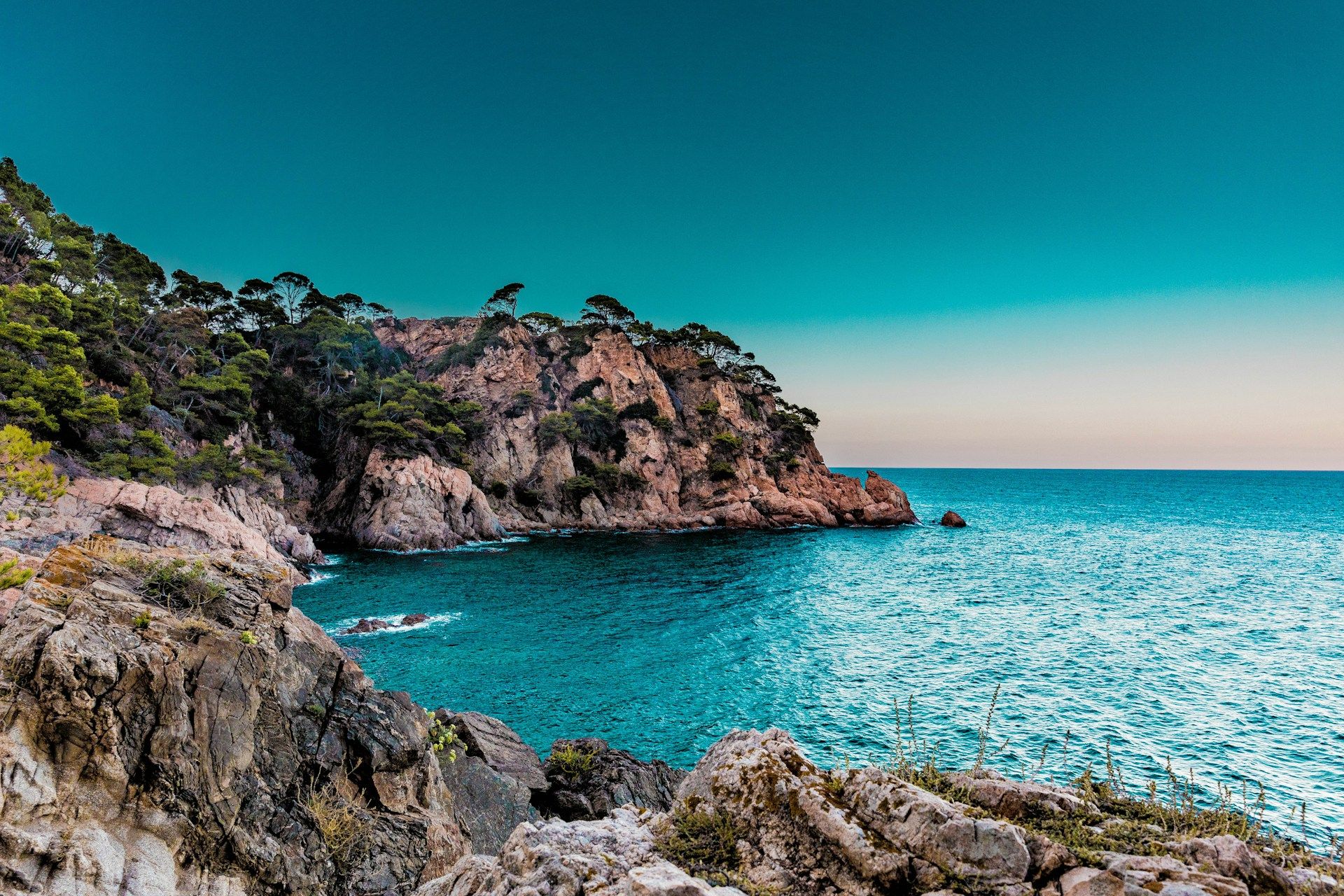
Photo by Drew Dizzy Graham on Unsplash
9일차: 북부 스페인, 오비에도 탐험
10일 여행 코스가 마지막 날에 가까워짐에 따라 스페인의 완전히 다른 곳으로 가 봅시다. 오비에도는 가장 유명한 자치 공동체 중 하나인 아스투리아스의 주도입니다. 그곳에서는 중세 거리의 오래된 건물들을 감상하며 믿을 수 없을 만큼 맛있는 요리를 맛볼 수 있습니다.
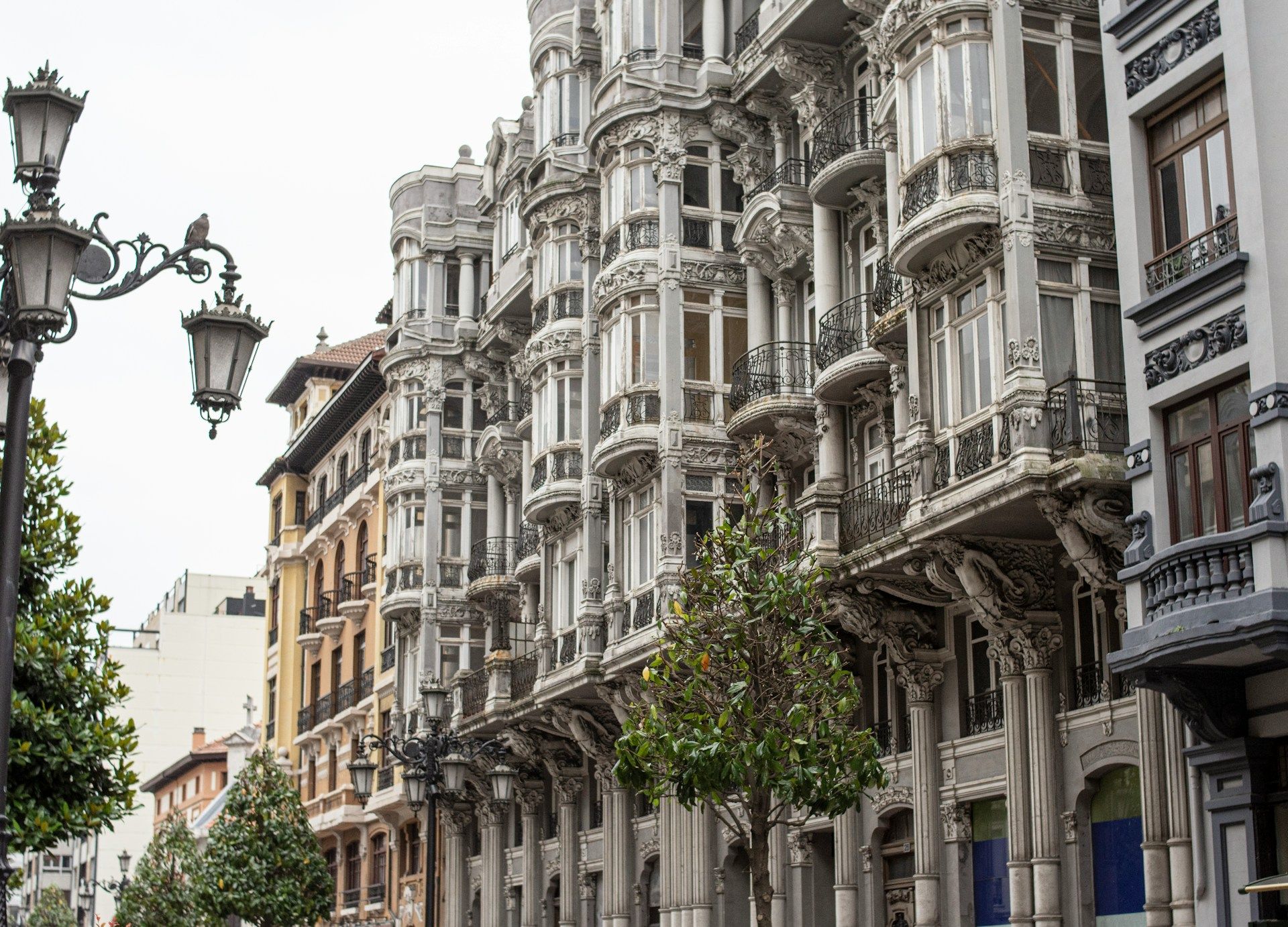
Photo by Hayffield L on Unsplash
-
산타 마리아 델 나랑코 방문: 도시 중심부 근처에 9세기 후로마네스크 양식의 궁전이 있습니다. 나중에 교회로 개조되었습니다. 이 건물은 유네스코 세계 유산의 일부로, 초기 아스투리아스 건축 양식의 독특함을 탁월하게 보여줍니다.
-
맛볼 만한 독특한 요리: 아마 스페인 요리를 이미 좋아하실 테지만, 조금 다른 것을 맛보고 싶다면 파바다 아스투리아나(Fabada Asturiana)를 시도해 보세요. 이것은 파베스(흰 콩), 초리소(스페인 소시지), 모르시야(순대), 라콘(돼지 어깨살)으로 만든 풍성한 요리입니다. 더 완전한 경험을 위해 어떤 시드레리아에서든 아스투리아스 사이다와 함께 맛보세요.
10일차: 산티아고 데 콤포스텔라
드디어 여행의 끝입니다. 당신보다 먼저 온 많은 순례자들처럼 산티아고 데 콤포스텔라에서 마무리합시다. 이 도시는 중세 이후 수백만 명의 여행자들이 여정을 마치는 곳이었습니다. 오늘날 모든 여행자가 종교적인 의미로 카미노 데 산티아고를 걷는 것은 아니지만, 여전히 매우 인기가 있으며 유럽 전역에서 온 사람들을 볼 수 있습니다.
-
산티아고 대성당 방문: 이곳은 사도 산티아고의 유해가 있다고 믿어지는 곳입니다. 기독교 전통에 따르면 그의 유해는 820년에 발견되었으며, 그 위에 성전이 지어졌습니다. 이 성전은 나중에 오늘날 볼 수 있는 대성당이 되었습니다.
-
메르카도 데 아바스토스 탐험: 친구와 가족을 위한 기념품을 사지 않고 스페인을 떠날 수는 없습니다. 성당 바로 뒤에 있으므로 놓칠 핑계가 없습니다. 그곳에서 갈리시아 요리의 최고를 맛볼 수 있습니다. 풀포 아 라 갈레가(pulpo a la Gallega) 또는 엠파나다(empanadas)를 시도해 보세요.
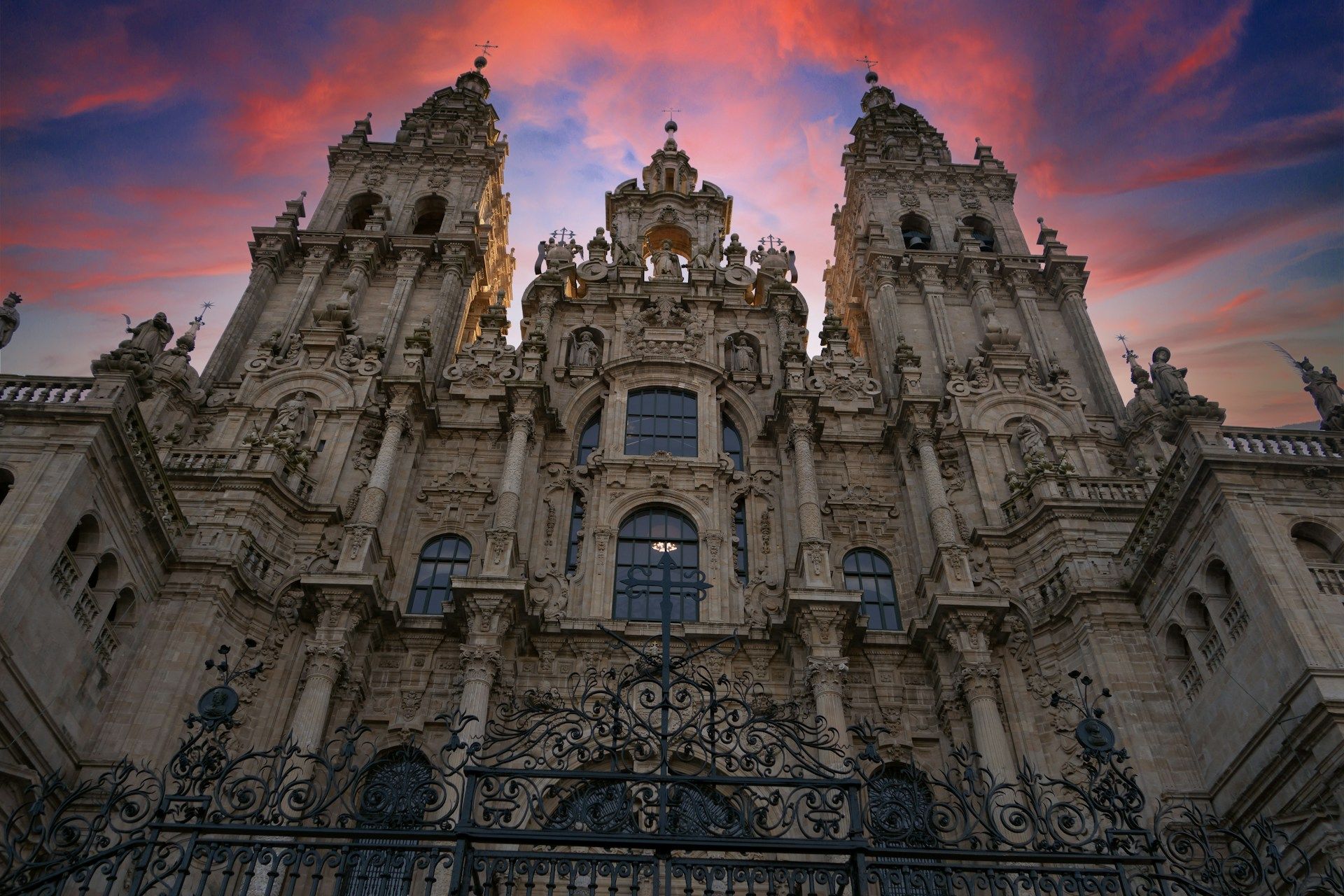
Photo by Free Nomad on Unsplash
마지막 생각
그리고 그렇게 10일간의 멋진 날들이 지나고 스페인에서의 여행 코스가 끝났습니다. 하지만 멋진 시간이었죠? 스페인은 방문하기에 정말 놀라운 곳이며, 볼 수 있는 독특한 도시와 할 수 있는 활동이 너무 많습니다. 지난 10일 동안 아마 많은 추억을 만들었고 지금쯤 새로운 사람이 된 것처럼 느낄 겁니다. 더 많은 모험에 도전하고 다른 나라로의 미래 여행을 계획할 준비가 되었습니다.
